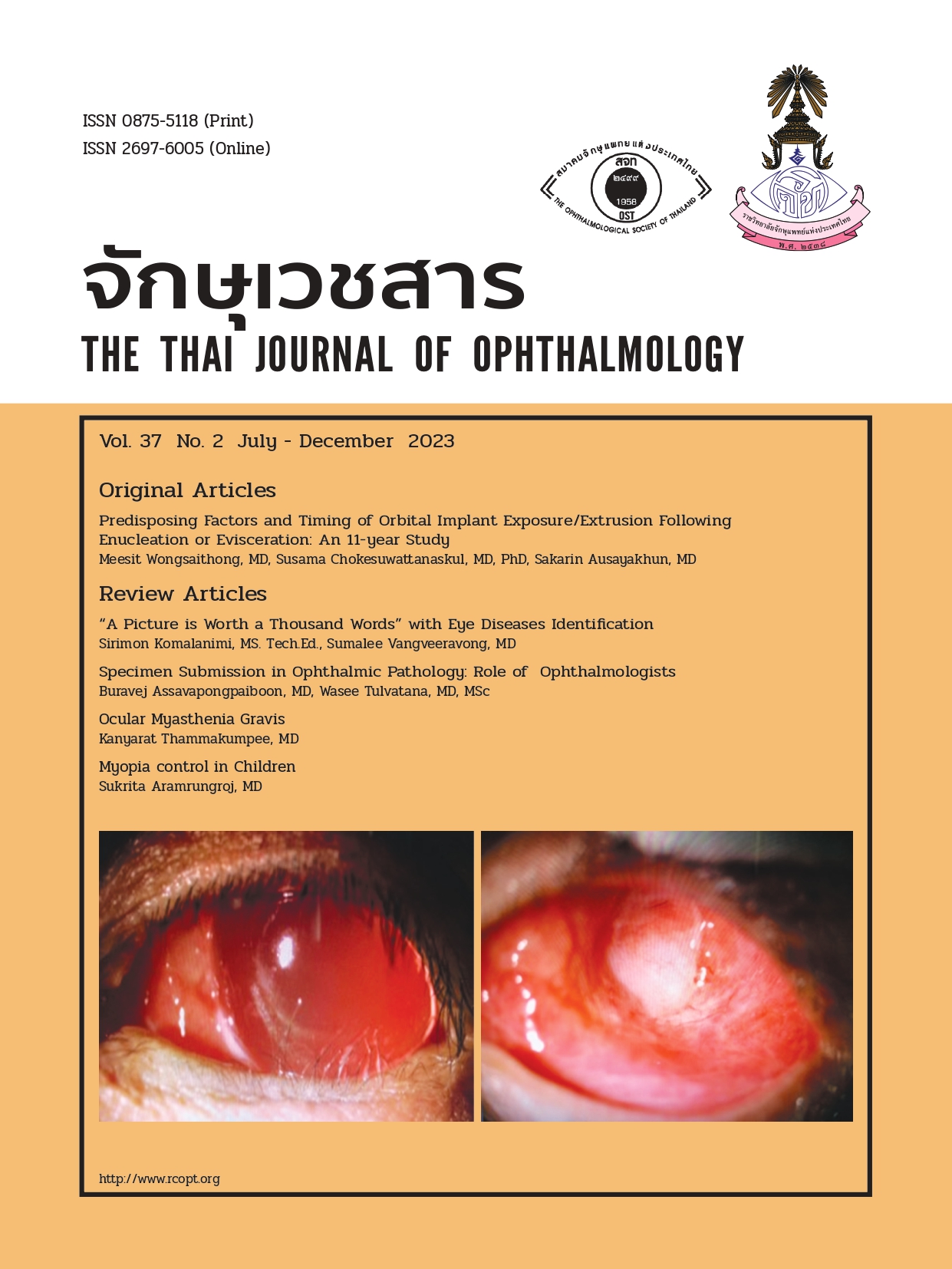Specimen submission in Ophthalmic pathology
Keywords:
specimen handling, ophthalmic pathology, fixation, specimen submissionAbstract
Pathological examination has an essential role in disease diagnosis and prognosis. However, pathological interpretation may be difficult or even impossible if cellular morphology or microstructures are distorted due to an artifact, an artificial structure or tissue alteration caused by the preparation process for a microscopic slide. Ophthalmologists who submit specimens for pathological examination should have knowledge of specimen collection for surgical pathology, cytology, and frozen sections starting from the proper surgical techniques for each organ collection, type and amount of fixative, and container. Importantly, precise communication between a surgeon and a pathologist should be made via an ophthalmic pathology consultation request form. Data should be completely provided for the right understanding of the submitted specimen. This leads to an accurate interpretation of pathological results, which helps guide further patient management.
References
Syed N, Berry J, Heegaard S, et al. Ophthalmic pathology and intraocular tumors. China: American Academy of Ophthalmology;2022:19-27.
Folberg R, Chévez-Barrios P, Lin A, et al. Tumors of the Eye and Ocular Adnexa. 5th ed. Korea: American Registry of Pathology;2021:1-20
Taqi SA, Sami SA, Sami LB, et al. A review of artifacts in histopathology. J Oral Maxillofac Pathol. 2018;22(2):279.
Singh R, Joseph A, Umapathy T, et al. Impression cytology of the ocular surface. Br J Ophthalmol. 2005;89(12):1655-1659.
Laver NMV. Ocular cytology: Diagnostic features and ongoing practices. Cancer Cytopathol. 2021;129(6):419-431.
Tseng SC. Staging of conjunctival squamous metaplasia by impression cytology. Ophthalmology. 1985;92(6):728-733.
วสี ตุลวรรธนะ. ตำราจักษุพยาธิวิทยา. ภูเก็ต: เวิลด์ออฟเซ็ท; 2552.25-54
ภาควิชา/ฝ่ายพยาธิวิทยา คณะแพทยศาสตร์ จุฬาลงกรณ์มหาวิทยาลัยและโรงพยาบาลจุฬาลงกรณ์ สภากาชาดไทย. คู่มือการส่งตรวจทางพยาธิวิทยา. 2563
Downloads
Published
Issue
Section
License
Copyright (c) 2024 The THAI Journal of OPHTHALMOLOGY

This work is licensed under a Creative Commons Attribution-NonCommercial-NoDerivatives 4.0 International License.
The Thai Journal of Ophthalmology (TJO) is a peer-reviewed, scientific journal published biannually for the Royal College of Ophthalmologists of Thailand. The objectives of the journal is to provide up to date scientific knowledge in the field of ophthalmology, provide ophthalmologists with continuing education, promote cooperation, and sharing of opinion among readers.
The copyright of the published article belongs to the Thai Journal of Ophthalmology. However the content, ideas and the opinions in the article are from the author(s). The editorial board does not have to agree with the authors’ ideas and opinions.
The authors or readers may contact the editorial board via email at admin@rcopt.org.


